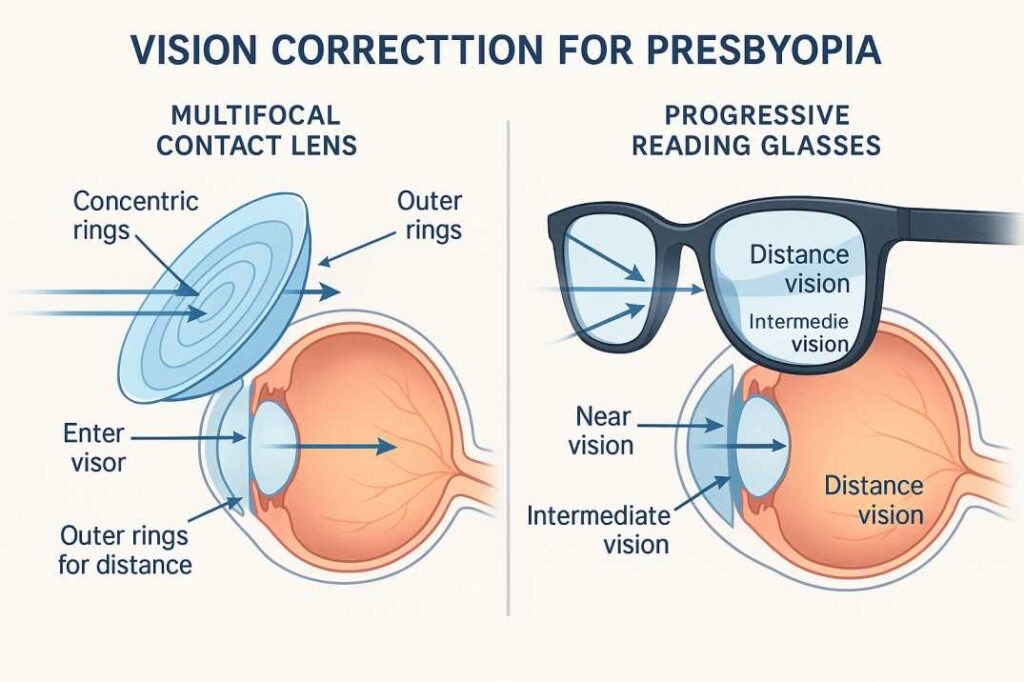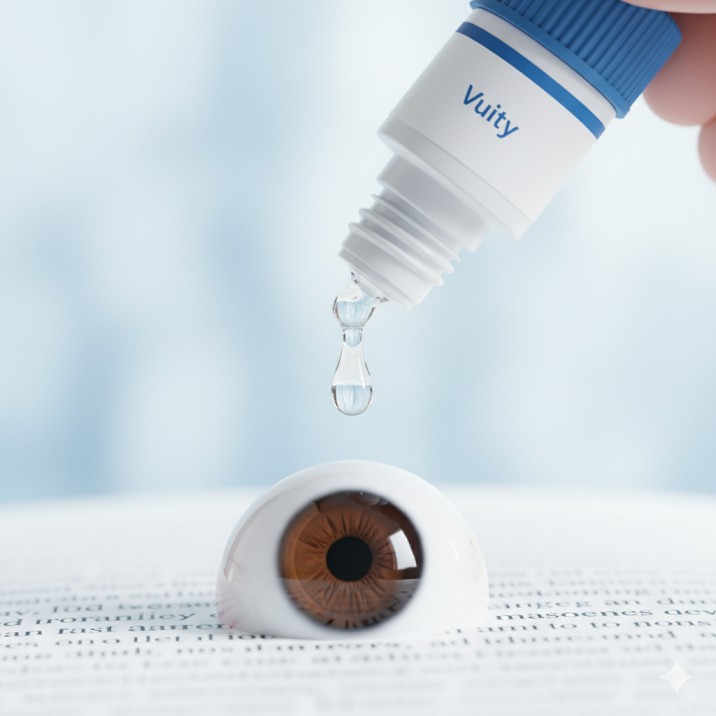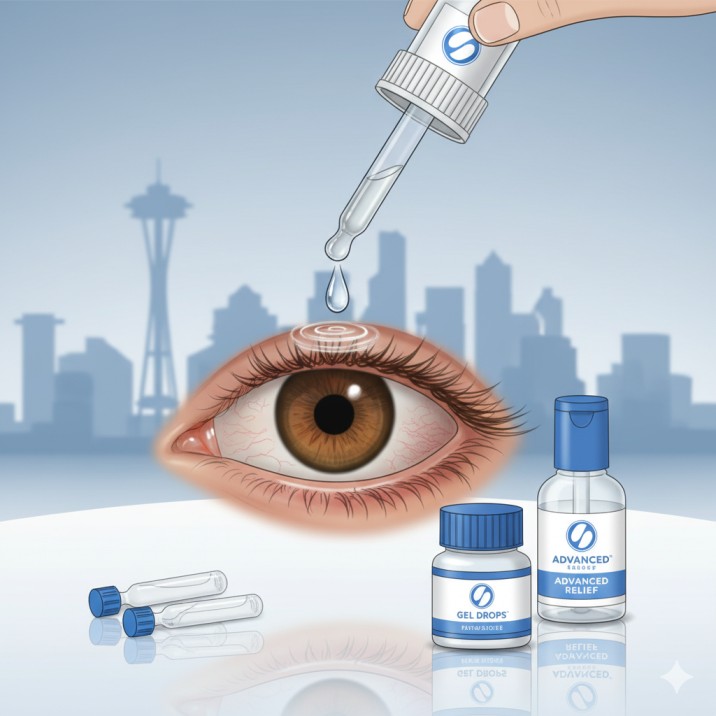Multifocal Contacts vs Reading Glasses: Which Is Better?
Bottom Line Up Front: For most adults over 40 experiencing presbyopia, multifocal contact lenses offer superior convenience and functionality compared to reading glasses, providing seamless vision at all distances without the need to juggle multiple pairs of glasses. However, the best choice depends on your lifestyle, eye health, and personal preferences.
Introduction: The Presbyopia Dilemma
If you’re over 40 and finding yourself holding menus at arm’s length or struggling to read your smartphone screen, you’re experiencing presbyopia—the age-related condition that affects nearly everyone by their mid-forties. This natural change in your eye’s focusing ability creates a common dilemma: should you reach for reading glasses or consider multifocal contact lenses?
Recent international surveys show that multifocal and monovision contact lens prescribing has more than doubled from 26.4% in 2000 to 61.1% in 2023. International trends in prescribing multifocal and monovision soft contact lenses to correct presbyopia (2000-2023): An update – PubMed, indicating a growing preference for contact lens solutions over traditional reading glasses. But which option truly offers the best vision correction for your needs?
This comprehensive guide examines the advantages and disadvantages of both multifocal contacts and reading glasses, helping you make an informed decision about your presbyopia correction. We’ll explore the science behind each option, real-world user experiences, and expert recommendations to help you see clearly at every distance.
Understanding Presbyopia: Why Your Near Vision Changes
Presbyopia occurs when the lens inside your eye becomes less flexible with age, making it difficult to focus on nearby objects. The amplitude of accommodation is 14 diopters at ten years of age and reduces to 4 diopters Contact Lenses for Presbyopia – StatPearls – NCBI Bookshelf as we age, explaining why reading becomes progressively more challenging.
Unlike other vision problems, presbyopia isn’t a refractive error but rather a natural physiological change. The condition typically becomes noticeable around age 40 and continues to progress until approximately age 65. Common symptoms include:
- Difficulty reading small print
- Need to hold reading material farther away
- Eye strain and headaches during close work
- Blurry vision when switching between near and far objects
- Poor vision in dim lighting conditions
Understanding presbyopia helps explain why both multifocal contacts and reading glasses can be effective solutions—they each provide the additional focusing power your eyes can no longer generate naturally.
Multifocal Contact Lenses: All-in-One Vision Correction
How Multifocal Contacts Work
Multifocal contact lenses incorporate multiple prescription powers into a single lens, allowing you to see clearly at near, intermediate, and far distances. Modern multifocal lenses use concentric “ring” technology, making them far superior to old-school bifocals. Presbyopia Solutions: Are Multifocal Contacts Right for You?.
These lenses work through two primary designs:
Simultaneous Vision Design: The most common type, where your eye looks through all prescription powers simultaneously. Your brain learns to automatically select the correct power for the task at hand. This design provides good binocular vision and stereoacuity while maintaining depth perception. Bifocal and Multifocal Contact Lenses for Presbyopia and Myopia Control – PMC.
Alternating Vision Design: Similar to bifocal glasses, these lenses have distinct zones for different distances. The lens moves slightly in your eye to position the appropriate power over your pupil.
Key Advantages of Multifocal Contacts
Freedom from Glasses Dependency Multifocal contacts eliminate the need to juggle reading glasses for tasks like scrolling your phone, working on a laptop, or even recognizing a friend across a café table. Presbyopia Solutions: Are Multifocal Contacts Right for You?. This seamless vision correction allows you to move naturally between activities without constantly reaching for different pairs of glasses.
Superior Field of Vision: Unlike reading glasses that only correct vision in the lens area, multifocal contacts move with your eyes, correcting your entire field of vision. Multifocal contacts provide clear side vision, whereas progressive glasses can cause blurred side vision when focusing on close objects. Multifocal Eyeglasses or Contact Lenses?.
Enhanced Lifestyle Compatibility Contact lenses may be better suited to an active lifestyle, especially if you enjoy contact or extreme sports. Multifocal Eyeglasses or Contact Lenses? They don’t fog up in weather changes, slip during physical activity, or create peripheral obstruction like glasses frames.
Improved Computer and Reading Ergonomics. If you work at a computer, multifocal contact lenses may be more comfortable than progressive glasses since you can view the screen while maintaining a natural head and neck position. Multifocal Eyeglasses or Contact Lenses?.
Multifocal contacts allow you to read comfortably without dropping your head and offer a bigger reading area. Multifocal Eyeglasses or Contact Lenses?.
Natural Vision Experience Multifocal lenses provide better binocular vision and increased depth perception, which is super-important for people who spend lots of time on the computer or who drive long distances. Multifocal vs. Monovision Contacts: What to Know | America’s Best.
Potential Drawbacks of Multifocal Contacts
Adaptation Period Required Most patients adjust within 1-2 weeks of daily wear, though your experience depends on your vision history and eye health. During this period, you may experience:
- Slight visual fluctuations as your brain adapts
- Minor “ghosting” or shadows around text
- Reduced contrast sensitivity in low light
Visual Compromis: If you demand flawless vision, multifocals might not be for you. Success equals 80% satisfaction—if you’re happy with your vision 80% of the time without needing readers, the fit works. Presbyopia Solutions: Are Multifocal Contacts Right for You?.
Higher Cost and Maintenance. The national average cost for multifocal contacts is $279 per year, but the cost ranges between $216 and $548. How Much Do Multifocal Contact Lenses Cost?. You can expect to pay between $300 and $500 for a year’s supply of the lenses. Multifocal Contact Lenses: What They Are (Pros & Cons) | NVISION. Additional fitting appointments may be necessary to optimize the prescription.
Not Suitable for Everyone. People with certain eye types, conditions, or diseases may have a harder time wearing multifocal contacts than they would with regular contacts. 6 Myths and Truths About Multifocal Contacts & Glasses | Eye Mechanix. Conditions like severe dry eye, irregular corneas, or significant astigmatism may limit candidacy.
Reading Glasses: The Traditional Solution
Types of Reading Glasses
Over-the-Counter (OTC) Readers Available in pharmacies and retail stores, these non-prescription glasses provide magnification for close work. The American Academy of Ophthalmology considers readers to be the simplest fix for near vision problems. Should I Get Reading Glasses, Multifocal Glasses, or Both?.
Prescription Reading Glasses Custom-made for your specific vision needs, these glasses can correct for presbyopia along with other refractive errors like astigmatism.
Progressive Addition Lenses (PALs). Also called “no-line” multifocals, these glasses provide smooth transitions between distance, intermediate, and near vision zones without visible lines.
Advantages of Reading Glasses
Simplicity and Affordability. On the lower end, something decent quality would be $30 to $40, and an average higher quality pair could be $200 to $300. How Much Do You Really Need To Spend On Reading Glasses? – Chatelaine. The average cost of reading glasses bought without a prescription (over the counter) is about $25 per pair. How Much Do Glasses Cost? | Foster Grant. They’re perfect for occasional use and can be kept in multiple locations for convenience.
No Adaptation Period Reading glasses provide immediate, clear vision for close work without requiring your brain to adapt to new visual patterns.
Perfect for Specific Tasks. Many people prefer to use reading glasses only when needed for activities like reading books, doing crafts, or working on detailed projects.
Eye Health Benefits: Reading glasses don’t touch your eyes, eliminating risks associated with contact lens wear, such as infections or dry eye complications.
Limitations of Reading Glasses
Constant Management Required Users often express frustration with “having to think about whether I’m wearing my lenses, or varifocals, or reading glasses” and the constant “on-off of the reading glasses.” Multifocal contact lenses – any good? | Mumsnet.
Limited Functionality Reading glasses only correct near vision, requiring you to remove them or look over them for distance viewing. This creates inconvenience for tasks requiring frequent focal changes.
Progressive Lens Drawbacks: While progressive glasses eliminate the need to switch between different pairs, they come with their own challenges, including:
- Peripheral distortion in the lens edges
- Need to move your head to find the right viewing zone
- Potential for straight lines to appear curved
Lifestyle Limitations: Reading glasses can be problematic for active lifestyles, outdoor activities, or situations where hands-free operation is important.
Head-to-Head Comparison: Key Decision Factors
Vision Quality and Performance
Distance Vision: Multifocal contacts generally provide better distance vision since they don’t require looking over glasses or switching between pairs.
Near Vision: Both options can provide excellent near vision when properly prescribed. Reading glasses may offer slightly sharper near vision for extended reading sessions.
Intermediate Vision: Living in tech-centric cities where screen time is unavoidable, intermediate vision is critical. Presbyopia Solutions: Are Multifocal Contacts Right for You?. Multifocal contacts typically excel in this area, providing clear computer and tablet viewing without head positioning adjustments.
Dynamic Vision: For activities requiring rapid focal changes, multifocal contacts offer significant advantages in convenience and natural vision experience.
Cost Analysis
Initial Investment:
- OTC reading glasses: about $25 per pair on average. How Much Do Glasses Cost? | Foster Grant
- Prescription reading glasses: $30-40 for lower quality, $200-300 for higher quality. How Much Do You Really Need To Spend On Reading Glasses? – Chatelaine
- Multifocal contacts: national average $279 per year, ranging $216 to 548. How Much Do Multifocal Contact Lenses Cost?
Long-term Costs:
- Reading glasses: Replacement due to loss, damage, or prescription changes
- Multifocal contacts: Ongoing lens replacement and solution costs
Value Consideration: How much is reader-free convenience worth for work, hobbies, or travel? Presbyopia Solutions: Are Multifocal Contacts Right for You?
Success Predictors
Recent research has identified key factors that predict success with different presbyopia corrections:
Multifocal Contact Success Factors:
- Previous contact lens experience
- Realistic expectations about vision quality
- Motivation to reduce glasses dependence
- Good overall eye health and tear film quality
Reading Glasses Success Factors:
- Acceptance of glasses for vision correction
- Primarily stationary near work
- Infrequent need for intermediate or distance vision during reading tasks
Recent Scientific Evidence: What Research Reveals
Clinical Study Findings
Efficacy Research: A 2024 prospective study of 22 presbyopic patients found that refractive multifocal contact lenses improved near vision while maintaining distance vision, without compromising contrast sensitivity. Patient satisfaction scores were high: 96.2 out of 100 for far vision, 91.9 for intermediate, and 85.0 for near vision. Efficacy of a new refractive multifocal contact lens for presbyopia | Scientific Reports.
Visual Performance Studies: Recent gaze behavior research found that under certain conditions, wearers of multifocal contact lenses make fewer head movements compared to progressive addition lens spectacle wearers. Gaze and behavioral metrics in the refractive correction of presbyopia – Smith – 2024 – Ophthalmic and Physiological Optics – Wiley Online Library, suggesting improved ergonomics and natural viewing patterns.
Reading Performance Analysis: Studies using eye-fixation analysis found that average silent reading speed in presbyopic populations improved with multifocal ccontactcompared to single vision contact lens correction, with faster fixation duration and fewer total fixations required. Presbyopia correction with multifocal contact lenses: Evaluation of silent reading performance using eye movements analysis – PubMed.
Global Prescribing Trends
International survey data from 52,580 soft daily wear lens fits show presbyopia correction with multifocal and monovision lenses has more than doubled from 26.4% in 2000 to 61.1% in 2023. International trends in prescribing multifocal and monovision soft contact lenses to correct presbyopia (2000-2023): An update – PubMed. This dramatic increase reflects both improved lens technology and growing patient satisfaction with contact lens presbyopia correction.
Long-term Outcomes
Research demonstrates that simultaneous image multifocal and bifocal soft contact lenses provide good stereoacuity levels while monovision significantly impairs binocular function. Bifocal and Multifocal Contact Lenses for Presbyopia and Myopia Control – PMC. This finding supports multifocal contacts for users who require depth perception for daily activities or occupational demands.
Expert Recommendations: Making the Right Choice
When Multifocal Contacts Are Ideal
Consider multifocal contacts if you:
- Currently wear contact lenses and want to avoid reading glasses
- Have an active lifestyle or play sports regularly
- Work extensively on computers or require frequent focal changes
- Want hands-free convenience for hobbies and activities
- Travel frequently and prefer minimal vision correction accessories
- Value the aesthetic benefits of being glasses-free
When Reading Glasses May Be Better
Reading glasses might be your preferred choice if you:
- Have dry eye syndrome or other conditions limiting contact lens wear
- Use near vision correction only occasionally
- Prefer the simplicity and lower cost of glasses
- Experience difficulty with contact lens insertion and removal
- Have significant astigmatism that complicates multifocal fitting
- Are you uncomfortable with the adaptation period required for multifocal contacts
Combination Approaches
Many presbyopes successfully use combination strategies:
- Multifocal contacts for daily wear with backup reading glasses
- Distance contacts with reading glasses for specific tasks
- Different solutions for different environments (work vs. leisure)
Practical Steps to Get Started
Professional Consultation
The most important step in choosing between multifocal contacts and reading glasses is scheduling a comprehensive eye examination with an experienced optometrist. Proper fitting is crucial for multifocal contact success, requiring more follow-up visits and higher fitting fees compared to standard lenses. Presbyopia Solutions: Are Multifocal Contacts Right for You?.
During your consultation, discuss:
- Your specific visual demands and lifestyle needs
- Previous experience with contact lenses or glasses
- Any eye health conditions that might affect lens choice
- Budget considerations for both initial and ongoing costs
- Timeline expectations for adaptation and follow-up care
Trial Period Importance
Many optical providers offer free or low-cost trials to help determine if multifocal contacts work for your specific needs. Take advantage of these opportunities to experience the difference firsthand before making a long-term commitment.
Setting Realistic Expectations
Success with multifocal contacts follows the “80% Rule”—if you’re happy with your vision 80% of the time without needing readers, the fit works. Presbyopia Solutions: Are Multifocal Contacts Right for You?. Understanding this compromise versus perfection mindset is crucial for satisfaction with any presbyopia correction method.
Resources and Scientific Citations
This article is based on current research and expert opinions from leading vision care professionals. The following key resources provide additional scientific backing for the recommendations presented:
1. Recent Clinical Research on Multifocal Contact Lens Efficacy
Kim, D.Y., Ahn, H., Lee, S. et al. “Efficacy of a new refractive multifocal contact lens for presbyopia.” Scientific Reports 14, 8878 (2024). https://www.nature.com/articles/s41598-024-55918-5
This prospective clinical study evaluated 22 presbyopic patients wearing refractive multifocal contact lenses for one week. The research demonstrated significant improvement in near vision while maintaining distance vision, with high patient satisfaction scores across all viewing distances. The study provides evidence-based support for multifocal contact lens efficacy in presbyopia correction.
2. International Prescribing Trends and Contact Lens Adoption
Efron N, Morgan PB, Woods CA, Jones D, Jones L, Nichols JJ. “International trends in prescribing multifocal and monovision soft contact lenses to correct presbyopia (2000-2023): An update.” Contact Lens and Anterior Eye 2024. https://pubmed.ncbi.nlm.nih.gov/39645523/
This comprehensive survey analyzed data from 52,580 contact lens fittings across 20 countries over 23 years. The research documents the dramatic increase in multifocal and monovision contact lens prescribing, providing crucial insights into global trends and patient preferences for presbyopia correction methods.
3. Visual Performance and Gaze Behavior with Multifocal Lenses
Smith, A.M., et al. “Gaze and behavioral metrics in the refractive correction of presbyopia.” Ophthalmic and Physiological Optics 2024. https://onlinelibrary.wiley.com/doi/10.1111/opo.13310
This innovative study used eye-tracking technology to analyze gaze behavior patterns in presbyopic patients wearing different vision correction methods. The research found that multifocal contact lens wearers made fewer head movements compared to progressive lens spectacle wearers, suggesting improved ergonomics and more natural viewing behavior during various visual tasks.
Future Innovations in Presbyopia Correction
The field of presbyopia correction continues to evolve rapidly. Recent advances include:
Improved Lens Materials: New silicone hydrogel materials provide better oxygen transmission and comfort for extended wear.
Advanced Optical Designs: Modern multifocal lenses use sophisticated concentric ring technology that mimics natural vision patterns more effectively. Presbyopia Solutions: Are Multifocal Contacts Right for You?.
Customization Technologies: Enhanced fitting algorithms now consider individual factors like pupil size, corneal shape, and visual demands to optimize lens selection.
Digital Integration: Smart contact lenses and augmented reality glasses represent emerging technologies that may revolutionize presbyopia correction in the coming decade.
Conclusion: Your Personal Vision Solution
The choice between multifocal contact lenses and reading glasses isn’t one-size-fits-all. Research suggests that multifocal contact lenses provide functional vision performance equal to progressive addition spectacle wear, and patients may prefer them over spectacle options. Visual performance with multifocal contact lenses and progressive addition spectacles – ScienceDirect.
For most active adults who value convenience and natural vision, multifocal contacts offer compelling advantages. However, reading glasses remain an excellent choice for those who prefer simplicity, have specific eye health considerations, or use near vision correction infrequently.
The key to success with either option lies in:
- Realistic expectations about vision quality and adaptation
- Professional fitting and ongoing care
- Choosing the solution that best matches your lifestyle and visual demands
- Being open to combination approaches when beneficial
Remember that presbyopia correction is not a permanent decision. You can switch between options as your needs change, try combination approaches, or upgrade to newer technologies as they become available.
Take Action: If you’re struggling with presbyopia and are unsure which solution is right for you, schedule a comprehensive eye examination with an experienced optometrist. They can assess your individual needs, discuss all available options, and help you find the vision correction strategy that will keep you seeing clearly and comfortably for years to come.
At Cannon EyeCare, we specialize in helping Seattle-area professionals find the perfect presbyopia solution for their unique lifestyle needs. Our comprehensive contact lens fittings and personalized approach ensure you get the vision correction that works best for you. Schedule your consultation today to explore your options with our experienced team.
FAQs
-
-
Multifocal contacts correct both near and distance vision in one lens.
-
Reading glasses only enhance close-up vision and must be removed for distance tasks.
-




